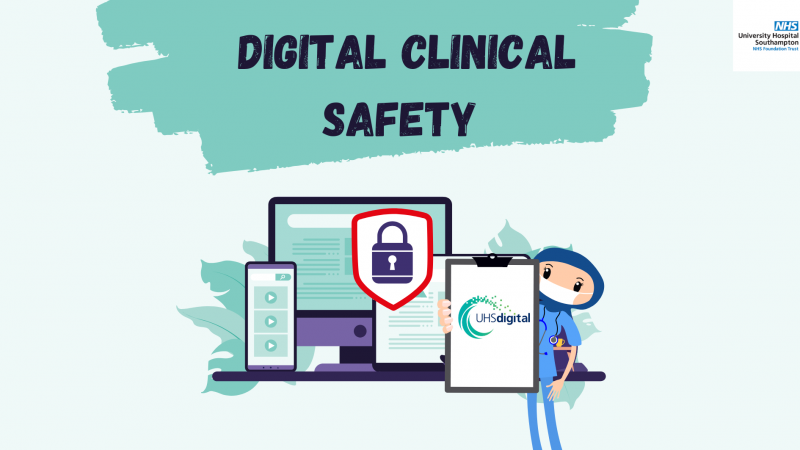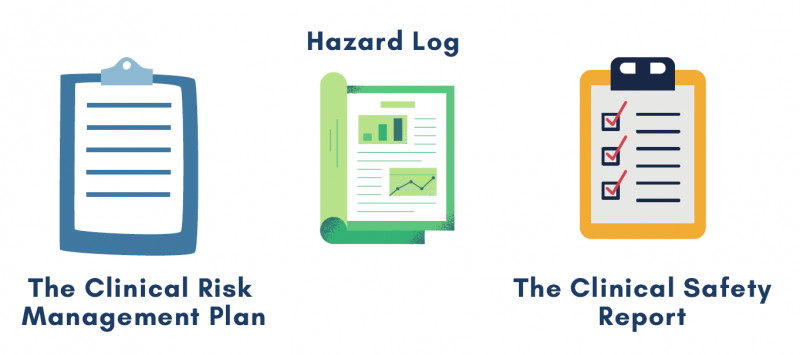It is vital that Clinical Safety Compliance is built into digital project design at the earliest stages of development to keep patients safe, writes Clinical Safety Administrator Basia Kuzia.
Here she reveals how UHS clinical and digital teams work together to ensure that digital tools and technologies used in patient care are safe, reliable, and effective.

Clinical Safety: an overview
Digital Clinical Safety at University Hospital Southampton (UHS) refers to the use of digital technology to enhance patient safety and improve the quality of care delivered by the organisation.
We, as the Clinical Safety team at UHS, are responsible for ensuring that the organisation’s digital systems are safe, reliable, and effective.
This includes conducting risk assessments, developing policies and procedures for the use of digital technology, and providing training and support to colleagues to ensure that they are using digital systems in a safe and effective manner.
Overall, the goal of Digital Clinical Safety at UHS is to leverage technology to improve patient safety and enhance the quality of care delivered by the UHS.
In this article I want to talk about how we work with UHS Digital teams as they develop software to be used with patients in the trust, and how we ensure compliance with legislation covering clinical safety.
Legal Compliance
All software used in the trust must comply with Standard DCB0129, a UK government standard that outlines requirements for the development and use of clinical software in NHS.
The legal basis for DCB0129 is set out in the Health and Social Care Act 2012 (HSCA 2012), which provides the Secretary of State for Health and Social Care with the power to issue guidance on the use of information technology in the NHS.
Compliance with DCB0129 is required whenever the NHS is considering buying, implementing, or updating clinical software, regardless of whether the software is developed in-house or by a third party. The standard applies to all clinical software used in the NHS, including electronic health records, clinical decision support systems, and medical device software.
The responsibility for compliance with DCB0129 lies with us – the NHS using the clinical software.
This includes the responsibility to ensure that any third-party software used by the NHS complies with the standard.
It is important for the Clinical Safety Team to have a clear understanding of the requirements of DCB0129 and to ensure that all relevant stakeholders, such as software developers, project managers and clinical staff, are aware of the standard and comply with its requirements.
Watch a short video about Clinical Safety Compliance from UHS Digital
Identifying and mitigating risks
The first step in managing Clinical Safety is to identify potential risks and hazards that may impact patient safety. This can be done through a variety of methods, including incident reporting, risk assessments, and audits.
Once risks have been identified, the next step is to develop processes to mitigate those risks.
This includes developing processes for reporting incidents, implementing safety measures such as checklists and providing training and education to DPMO team to ensure they are aware of potential risks and how to mitigate them.
After processes and procedures have been developed, they must be implemented throughout UHS. This includes ensuring that all external digital suppliers are aware of the processes and following them consistently.
The final step in managing Clinical Safety is to evaluate the effectiveness processes and make improvements as needed. This can include reviewing hazard logs and identifying areas for improvement.
Some of the possible consequences of inadequate clinical safety management include:
- Patient harm,
- Legal and financial penalties
- Damage to reputation
- Loss of trust
Overall, clinical safety is critical for ensuring that patients receive safe and effective care.
Failure to manage Clinical Safety correctly can have serious consequences for patients, us and the organisation as a whole.
Clinical and digital collaboration
Collaboration between digital and clinical teams is crucial when developing and implementing digital tools and technologies in healthcare.
Collaboration between a clinical safety team and a digital team typically involves working together to ensure that digital products or services related to healthcare are safe and effective.
This may include risk assessments, where we as clinical safety team and digital team work together to identify potential risks associated with the project.
The clinical safety team may perform testing and validation of the digital product or service to ensure that it is safe and effective for use in healthcare settings.
Always improving: The clinical safety team and digital team work together to monitor the performance of the digital product or service and continuously improve it based on user feedback and data analysis.
Overall, effective collaboration between clinical and digital teams requires open communication, a clear understanding of each team’s roles and responsibilities, and a shared commitment to achieving the project’s goals.

Clinical Safety Risk Management steps
Constant change and improvement
Improving clinical safety is a complex and ongoing process that involves multiple stakeholders, including healthcare providers, patients, regulatory bodies, and technology vendors.
One of the main challenges in improving clinical safety is the sheer complexity of the healthcare system, which involves multiple healthcare providers, processes, and systems.
Ensuring that all of these elements work together seamlessly to ensure patient safety can be challenging.
Another challenge is the constant evolution of healthcare technology, which requires ongoing evaluation and assessment to ensure that it is safe and effective.
Healthcare providers must also stay up-to-date with the latest guidelines and best practices, which can be time-consuming and challenging.
Despite these challenges, there have been some significant successes in improving clinical safety.
For example, healthcare providers have implemented various strategies to reduce medication errors, such as computerized physician order entry systems, barcoding technology, and medication reconciliation processes.
Additionally, healthcare organisations have implemented patient safety programs and created reporting systems to identify and address safety issues.
Overall, the effort to improve clinical safety is ongoing and requires a multidisciplinary approach.
While there may be challenges along the way, the ultimate goal of ensuring patient safety makes the effort worthwhile.
The way forward…
Promoting clinical safety in digital project design is becoming increasingly important as healthcare continues to integrate technology into patient care. Some future plans for promoting clinical safety in digital project design include:
1. Standards and guidelines: Developing and implementing standards and guidelines for digital project design can help ensure that patient safety is prioritized in the development of new technologies. This includes following established best practices and incorporating feedback from healthcare providers and patients.
2. User-centred design: User-centred design involves involving end-users, such as healthcare providers and patients, in the design process to ensure that the technology is usable and safe. This includes conducting user testing and incorporating feedback to improve the technology.
3. Risk assessment: Conducting thorough risk assessments of digital projects can help identify potential safety hazards and determine ways to mitigate these risks. This includes evaluating potential system failures and ensuring that backup plans are in place.
4. Ongoing monitoring and evaluation: Once a digital project is implemented, ongoing monitoring and evaluation can help identify any safety issues that arise and ensure that the technology continues to meet safety standards. This includes regular updates and testing to ensure that the technology remains safe and effective.
Overall, promoting clinical safety in digital project design will require ongoing collaboration between healthcare providers, technology vendors, regulatory bodies, and patients to ensure that patient safety remains the top priority in the development and implementation of new technologies.
